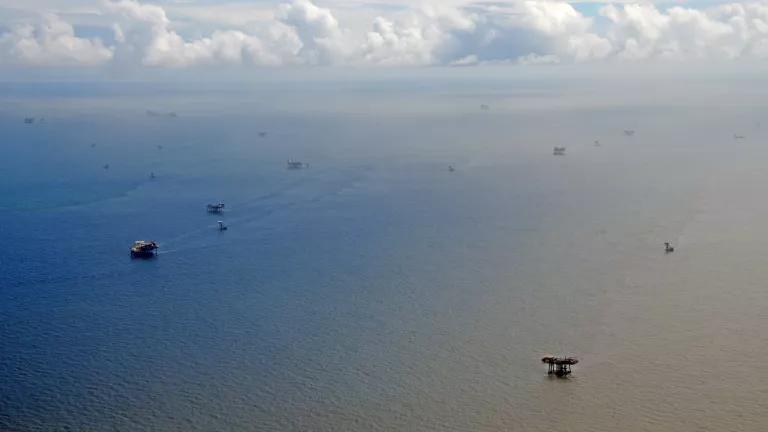There’s a quiet sea change taking place along the Atlantic Coast. States from Maine to Virginia have started, for the first time ever, working with each other and with the federal government to better coordinate on ocean development.
This coordination may seem like a no-brainer, but it’s unusual. A patchwork of federal agencies governs ocean use, many with different goals and mandates. One agency is the go-to for wind and oil and gas siting. Another has purview over offshore liquid natural gas facilities. Still another keeps an eye on industrial impacts to marine life, from endangered whales and sea turtles to fish. And that’s not even counting agencies responsible for military testing and shipping routes.
States typically make decisions in ocean waters from the shoreline out to 3 nautical miles. The federal government controls the land and waters from 3 to 200 nautical miles. Fish and marine mammals have no clue about these arbitrary political boundaries. Nor do many of us in search of breaching whales or fishing in deeper waters for tuna. With more and more interest in tapping into the ocean’s bounty, the ocean is becoming increasingly crowded and noisy.
In response, two regions—the Northeast and the Mid-Atlantic—are developing ocean plans with federal agencies, regional fisheries managers, tribes—and extensive stakeholder input—to better coordinate ocean decision-making to help protect ecosystem health and promote sustainable use. The draft regional ocean plan for the Northeast was issued on May 25 and public comment meetings are happening throughout June. The Mid-Atlantic draft plan is expected out this month and there are open house public listening sessions in July.
These two plans are based on several years of engagement with scientists, all kinds of ocean businesses, recreational users, and environmental groups. The regional planners compiled the most up-to-date information on ocean resources and human uses on easily accessible web portals (here and here) for all to use in making smart ocean decisions. The plans aim for better agency coordination and invite more stakeholder participation in offshore decisions.
Both plans represent forward progress, but there are items the final plans will need to contain in order to ensure a healthy ocean today and for the future:
- A short, definitive deadline—ideally, by the end of this year—for identifying areas critical for the long-term health of the region’s fish, sea turtles, whales and other marine life. Knowing where ecologically special places are helps managers, business and other stakeholders make better decisions.
- Agency commitments to conserve these important ocean areas, and the areas of high biodiversity that have been identified, where more than 50 percent of the region’s fish, birds, corals and marine mammals can be found over the course of a year. Protecting our ecologically and economically valuable ocean life should be a best practice.
We’ll be following the development of these plans. And we encourage you to attend a public comment session and make your voice heard. It may not be possible to hear the happy shrieks of children jumping in the ocean waves from inside at these meetings, but by attending we can be sure that our beautiful North Atlantic Ocean will remain a place that families want to visit, swim and fish.
You can also take action to help ensure funding and full implementation of the National Ocean Policy at http://ow.ly/bjWe300piPB.




